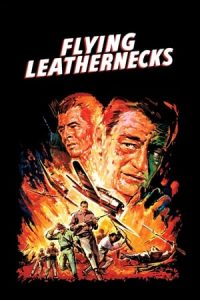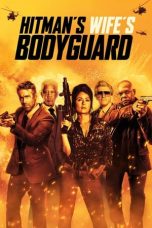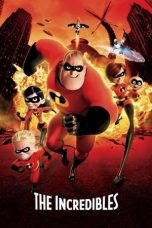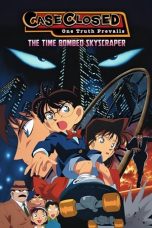- Source: Iven Carl Kincheloe Jr.
Safehouse (2023)
Déjà Vu (2006)
Flying Leathernecks (1951)
Up (2009)
The Forge (2024)
Hitman’s Wife’s Bodyguard (2021)
The Incredibles (2004)
No More Posts Available.
No more pages to load.
Iven Carl "Kinch" Kincheloe Jr. (July 2, 1928 – July 26, 1958) was an American pilot. He served in the U.S. Air Force during the Korean War, in which he was recognized as a flying ace. He continued as a test pilot after the war, participating in the Bell X-2 program, in which he set an altitude record of 126,200 feet (38,470 m) in 1956. For this suborbital flight above most of the atmosphere, he became known as "The First Spaceman". He was selected for the Air Force's program to put a man in space, but was killed in a plane crash in 1958.
Early life and education
Born July 2, 1928, in Detroit, Michigan, Kincheloe grew up in Cassopolis in the southwest part of the state, the only child of Iven C. Kincheloe Sr. (1894–1966) and Frances Wilder Kincheloe. Interested in aviation from a very young age, he graduated from Dowagiac High School in 1945 and attended Purdue University in West Lafayette, Indiana.
Kincheloe joined the Reserve Officers' Training Corps (ROTC), was a member of Sigma Phi Epsilon fraternity (Indiana Alpha), and graduated with a Bachelor of Science degree in aeronautical engineering in 1949. In the summer of 1948, the ROTC cadet met test pilot Chuck Yeager and sat in the cockpit of the Bell X-1.
Korean War
Upon graduation from college, Kincheloe received his commission as a second lieutenant in the U.S. Air Force and entered flight training. After earning his pilot wings in August 1950, he spent a year as a test pilot, flying the F-86E at Edwards Air Force Base, California, was promoted to first lieutenant, and transferred to Korea in September 1951.
During the war, he was assigned to the 25th Fighter-Interceptor Squadron, he flew F-80s on thirty combat missions and F-86s on 101 combat missions, downing five MiG-15s (becoming an ace and earning the Silver Star) before returning to the U.S. in May 1952. At this time, he had reached the rank of captain.
Post-war career
After the war, Kincheloe was a gunnery instructor at Nellis Air Force Base outside Las Vegas, Nevada, then resumed his activity as a test pilot (subsequent to his prior flight test activities associated with the F-86E), graduating in December 1954 from the Empire Test Pilots' School at Farnborough, England. He participated in the testing of the Century Series of fighter aircraft (F-100 Super Sabre, F-101 Voodoo, F-102 Delta Dagger, F-104 Starfighter, F-105 Thunderchief, and F-106 Delta Dart).
In the mid-1950s, Kincheloe joined the Bell X-2 program and on September 7, 1956, flew at more than 2,000 mph (3,220 km/h) and to a height of 126,200 feet (38,470 m) (some sources list 126,500), the first flight ever above 100,000 feet (30,480 m), above 30 km (18.6 mi) and above 20 mi (32.2 km). For this he was nicknamed "America's No. 1 Spaceman". (However, this altitude is below the Kármán line, the threshold for "space" later established by the Fédération aéronautique internationale, as well as below the 50-mile-boundary used by the U.S. Air Force.) He was awarded the Mackay Trophy for 1956 for the flight.
The X-2 program was halted three weeks later, after a crash resulted in the death of Mel Apt in a flight in which he became the first person to exceed Mach 3. Kincheloe was later selected as one of the first three pilots in the next rocket-powered aircraft program, the X-15, and would have been part of the Man in Space Soonest project.
Death and legacy
In July 1958, Kincheloe was killed in the crash of an F-104A (Lockheed F-104A-10-LO s/n 56-772) at Edwards Air Force Base; he had ejected at low altitude, but given that the early F-104 used a downwards catapulted ejection seat the deployed parachute did not adequately slow his descent. He was buried with full military honors at Arlington National Cemetery. Only thirty years old, Kincheloe was survived by wife, Dorothy, their young son, Iven III, and a daughter who was born two months later, Jeannine.
On September 25, 1959, Kincheloe Air Force Base in Michigan's Upper Peninsula was renamed in his honor; formerly Kinross Air Force Base, it closed in 1977.
A monument stands approximately 1½ miles (2½ km) east of his hometown of Cassopolis, Michigan; an angular stone slab twelve feet (3.7 m) in height, it bears a silver model of the X-2 pointed skyward. (41.915°N 85.973°W / 41.915; -85.973)
Kincheloe Elementary School, part of the nearby Dowagiac Union School District, is named in his honor.
The television program Hogan's Heroes included a character named Staff Sergeant James Kinchloe, played by Ivan Dixon.
In 1992, he was inducted into the Aerospace Walk of Honor.
In 2011, he was inducted into the National Aviation Hall of Fame.
The Society of Experimental Test Pilots Iven C. Kincheloe Award is named in his honor.
The Purdue University Arnold Air Society squadron is named in his honor.
Awards and decorations
= Silver Star citation
=Kincheloe, Iven C.
Captain U.S. Air Force
25th Fighter-Interceptor Squadron, 51st Fighter-Interceptor Group, Fifth Air Force
Date of Action: April 1, 1952
Citation:
The President of the United States of America, authorized by Act of Congress, July 9, 1918, takes pleasure in presenting the Silver Star to Captain Iven Carl Kincheloe, United States Air Force, for gallantry in action against an enemy of the United Nations as Pilot of an F-86 Fighter Plane in the 25th Fighter-Interceptor Squadron, 51st Fighter-Interceptor Group, Fifth Air Force, on 1 April 1952. While leading a flight of four F-86 type aircraft, Captain Kincheloe encountered sixteen enemy aircraft attempting to intercept friendly fighter-bombers, Captain Kincheloe quickly broke his flight into elements to engage the enemy, and boldly attacked although greatly outnumbered. He pressed attacks against two of the enemy, completely disregarding efforts of other aircraft to deter him. Displaying unusual aggressiveness, Captain Kincheloe severely damaged the aircraft of the enemy flight leader, forcing him to eject himself, and despite heavy damage to his own aircraft, attacked another and destroyed it completely. Captain Kincheloe's destruction of the two aircraft effectively broke up the enemy force and prevented their attack on the friendly fighter-bombers. Through his personal courage, outstanding airmanship, and devotion to duty, Captain Kincheloe reflected great credit upon himself, the Far East Air Forces, and the United States Air Force.
See also
S.A Rafiqui
List of Korean War air aces
Notes
References
External links
Korean War Aces
USAF Museum
Story about exploits @ CombatSim
Photograph of Kincheloe with other pilots of his squadron wearing red caps and scarves, "Sabres and Aces", Air Force Magazine, September 2006, p. 81.
Iven C. Kincheloe Jr. Archived 2015-02-12 at the Wayback Machine at the National Aviation Hall of Fame
Astronautix biography of Iven C. Kincheloe Jr.
Iven C. Kincheloe Jr. Photograph of his grave marker at Arlington National Cemetery, with brief biography.





























